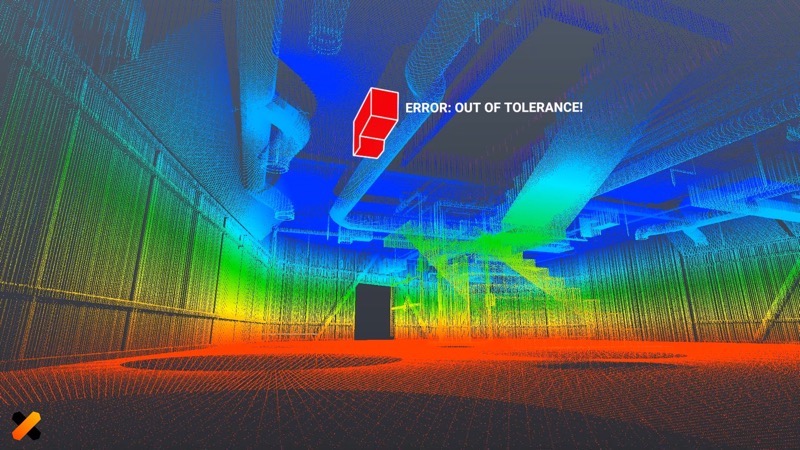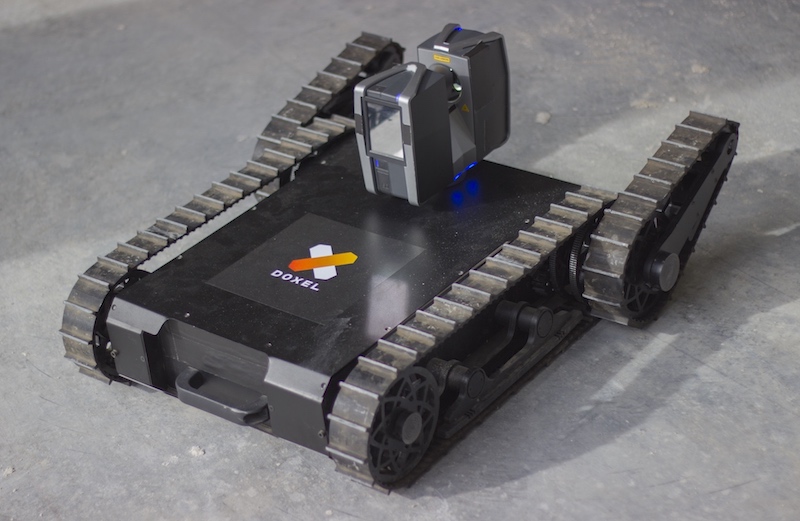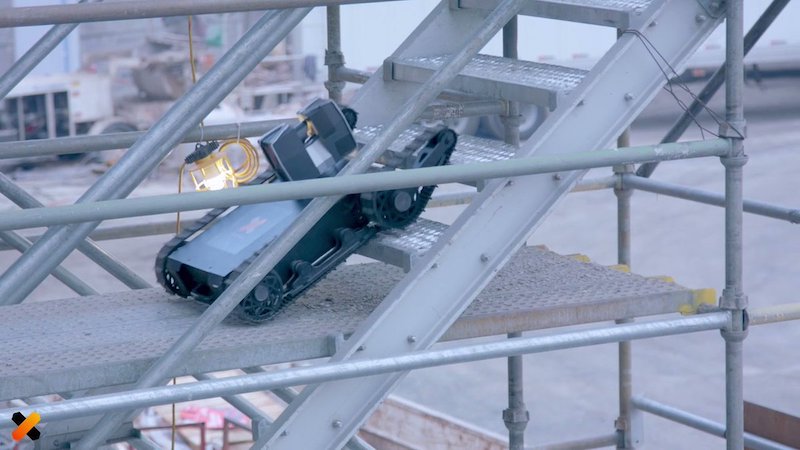The larger a construction project is, the more complicated it is going to be to manage. Small oversights or errors can lead to exponentially greater losses in time and money.
Doxel, a new construction productivity solution, claims to simplify the construction management process to help avoid these costly loses. Doxel’s preferred solution? Robots equipped with new artificial intelligence-based computer vision software.
In addition to drones capturing the site from above, Doxel uses rovers to comb through the site and gain the most accurate, up-to-date information. Part WALL-E, part MSE-6 mouse droid from “Star Wars,” Doxel’s self-directing robots survey building sites each day to capture HD imagery and laser scans at all stages of construction. The robots can traverse uneven terrain, multiple terrain types such as rock, concrete, or dirt, and can even climb stairs. Once in the correct position, the robot will stop and take a 360-degree scan of a space before moving on to the next area.
 Courtesy Doxel.
Courtesy Doxel.
Working behind the software is a 3D semantic understanding algorithm developed by Doxel. This algorithm classifies objects in real-world construction environments with a high level of reliability. 3D computer vision was used because a 3D neural network, theoretically, requires fewer datasets for training than 2D. This new computer vision algorithm avoids the issues commonly associated with scans such as occlusion and poor visibility. It also is able to interpret clutter from installed materials.
Doxel’s algorithms classify installed components and measure quantities in real-time. This data is then cross-referenced with the project estimate to provide instant feedback of where a project stands financially. The software calculates earned value for thousands of line items to provide an exact amount owed for a day’s work.
 Courtesy Doxel.
Courtesy Doxel.
Doxel also tracks model-to-field deviations instantly to catch and correct errors early, before they cost time and money to rectify. The AI software deep links to the project schedule and detects when a crew falls behind. Alerts are sent via an integrated app notifying everyone of the delay so managers can re-prioritize and optimize labor
productivity.
Integrated cloud software makes it easy to track progress over time for things like plumbing, electrical, and mechanical. In one case study, Doxel increased productivity by 38% and helped the project team deliver the project 11% under budget.
Related Stories
| Aug 11, 2010
Proposed EPA regulations threaten thousands of jobs, says Portland Cement Association
A proposed hazardous air pollutant regulation for the cement industry undermines the balance between environmental protection and economic viability, according to statements the Portland Cement Association (PCA) is issuing this week at a series of public hearings.
| Aug 11, 2010
Turner, Webcor, Hensel Phelps top BD+C's list of the 75 largest green contractors
With more than $3 billion in value of construction put in place for green buildings in 2008, Turner Construction tops BD+C’s ranking of the nation’s 75 largest green contractors, published as part of the Giants 300 report. Webcor Builders ($2.27 billion), Hensel Phelps Construction ($2.10 billion), The Whiting-Turner Contracting Co. ($1.97 billion), and Clark Group ($1.89 billion) round out the top five.
| Aug 11, 2010
Free waterproofing and roofing resource handbook available from American Hydrotech
American Hydrotech is now offering a waterproofing and roofing resource handbook for all architects and design community professionals. Topics include sustainable design, waterproof product specification, and proper installation techniques for use by building professionals in designing and waterproofing roof decks, plazas, vertical foundations, reflecting pools, and green roof applications.
| Aug 11, 2010
World-Class Revival on Utah’s Capitol Hill
Since 1916, the Utah State Capitol building has served as the foundation of Utah’s government, housing the state legislature operations as well as the offices of the governor, attorney general, and treasurer. But after decades of wear and tear and numerous short-sighted modernization attempts, Utah’s rock was on the verge of crumbling.
| Aug 11, 2010
Installation work begins on Minnesota's largest green roof
Installation of the 2.5 acre green roof vegetation on the City-owned Target Center begins today. Over the course of two days a 165 ton crane will hoist five truckloads of plant material, which includes 900 rolls of pre-grown vegetated mats of sedum and native plants for installation on top of the arena's main roof.
| Aug 11, 2010
AASHE releases annual review of sustainability in higher education
The Association for the Advancement of Sustainability in Higher Education (AASHE) has announced the release of AASHE Digest 2008, which documents the continued rapid growth of campus sustainability in the U.S. and Canada. The 356-page report, available as a free download on the AASHE website, includes over 1,350 stories that appeared in the weekly AASHE Bulletin last year.
| Aug 11, 2010
'Flexible' building designed to physically respond to the environment
The ecoFLEX project, designed by a team from Shepley Bulfinch, has won a prestigious 2009 Unbuilt Architecture Design Award from the Boston Society of Architects. EcoFLEX features heat-sensitive assemblies composed of a series of bi-material strips. The assemblies’ form modulate with the temperature to create varying levels of shading and wind shielding, flexing when heated to block sunlight and contracting when cooled to allow breezes to pass through the screen.
| Aug 11, 2010
New book provides energy efficiency guidance for hotels
Recommendations on achieving 30% energy savings over minimum code requirements are contained in the newly published Advanced Energy Design Guide for Highway Lodging. The energy savings guidance for design of new hotels provides a first step toward achieving a net-zero-energy building.







